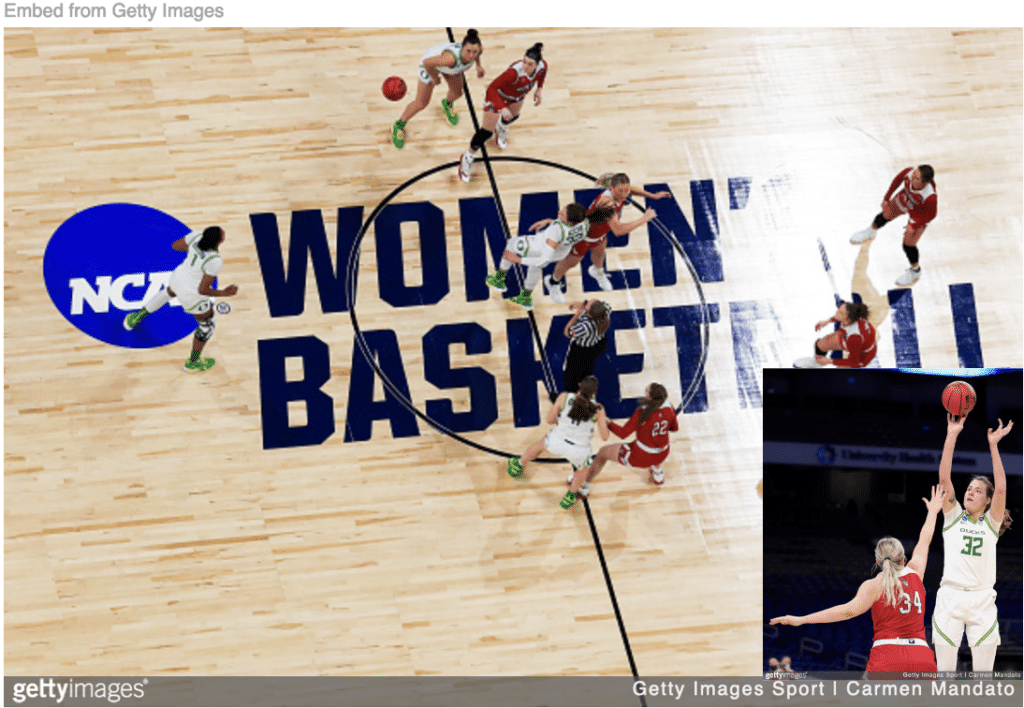
Colleges treat female athletes as second-class citizens, especially compared with their male counterparts. And one can hardly blame most female athletes for accepting it. After all, even the highly successful and celebrated women’s USA soccer team has been waging a decades-long battle for equal treatment in this respect, to no avail.
Sedona Prince exposes NCAA mistreatment
The stark difference in accommodations the NCAA provided for men and women at this year’s tournament was egregious. It was begging for someone to call it out.
Female player Sedona Prince obliged. She orchestrated what can be dubbed a Rosa Parks-light protest. Here is how ABC News reported on March 21:
Oregon’s Sedona Prince was one of several athletes who took to social media to highlight the differences between the facilities on offer for male and female athletes.
She showed a dumbbell tree with 12 weights on it, saying ‘this is our weight room,’ before flipping the camera to show a much larger facility she said was the men’s weight room. ‘If you aren’t upset about this problem, then you are a part of it,’ she said.
You’d never know the NCAA has been mistreating women athletes with this kind of disrespect forever. Whether concerning travel, accommodations, swag, or food, the differences have always been thus. Yet where were these influencers?
Mistreatment of women athletes is nothing new
As it happens, I’ve been venting outrage over this mistreatment for over a decade. But None of my commentaries went viral. For example, I called out the NCAA for treating women players like second-class athletes in “UConn Routs Louisville to Win NCAA (Women’s) Championship” on April 8, 2009.
I’ve even taken influencers, from Taylor Swift to Steph Curry, to task for not leveraging their platforms to aid this cause. For example, I did so in “UConn Women’s Basketball Team Makes History, Again” on February 16, 2017.
Of course, mistreating female athletes is a mainstay, not a mistake. The NCAA betrayed this fact by transforming that one dumbbell rack into a spacious, fully-equipped workout room overnight. All it took was media sunlight exposing its shameful treatment.

But that raises this question: If viral pressure can force the NCAA to do the right thing in this respect, why not pressure it to:
- Treat women athletes equally.
- Pay college athletes. I’ve been championing this cause in commentaries such as “Student-Athletes Make Billions (for Colleges) but Most Graduate Poor … and Dumb” on January 16, 2014; and
- Enforce minimum educational proficiency for student-athletes. Too many of them graduate too dumb to read the writing on degrees not worth the paper they’re written on.
Upsets confounding analysts
Meanwhile, I suspect even God is venting outrage over this mistreatment. Only divine intervention explains so many upsets in the men’s bracket.
Upsets have analysts sounding like they all speak different languages as they try to explain them. Hell, not since God confounded tongues to foil the completion of the Tower of Babel have so many tongues spoken so much jibberish.
In contrast, the women’s bracket is playing out as expected. It’s showcasing the right ratio of excitement, orderliness, and upsets that make watching March Madness exciting — without going insane.
So do yourself a favor and tune in to a game or two — of course, assuming you can find it on your cable service.
But when you visit the NCAA’s password-protected digital media hub to access things like postgame Zoom conferences and action shots, there was not a single picture from any of those games.
(Yahoo! Sports, March 22, 2021)
In other words, the media is snubbing the women players just like the NCAA mistreated them. Like I said, the disrespect is intentional.